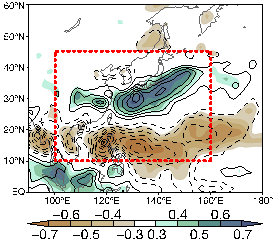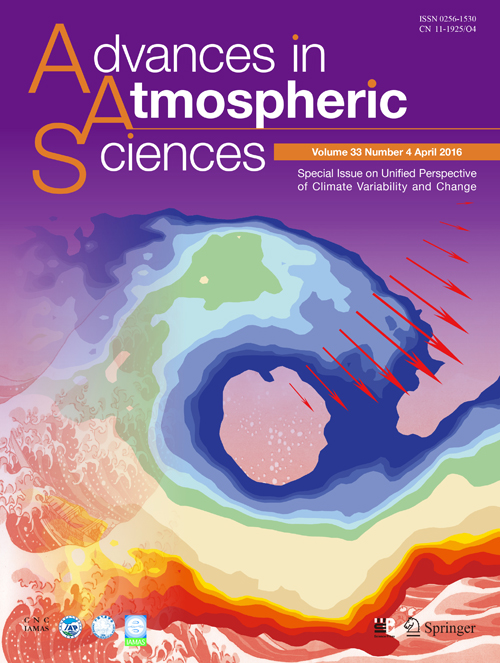Scientists Advanced Their Understanding of Indo-Northwest Pacific Climate Variability
Date:2015-12-28
The summer of 1998 was highly unusual in many parts of the Indo-western Pacific sector. China suffered the great Yangtze River flood; the Northwest Pacific had one of the most inactive typhoon seasons; and the North Indian Ocean and South China Sea were unusually warm. They were all the effects of the mega El Ni?o that terminated before the summer. This highlights a long-standing mystery that climate anomalies over the Northwest Pacific are more pronounced in post-El Ni?o summers than in summers when El Ni?o develops. A recent review (Xie et al, 2016) summarized the progress in solving the mystery.
The pieces of the puzzle began to emerge some 30 years ago. In 1986, Tsuyoshi NITTA of Japan Meteorological Research Institute discovered a see-saw relationship between suppressed convection over the tropical Northwest Pacific and excessive rainfall over East Asia, a meridional dipole he called the Pacific-Japan (PJ) pattern. Another important lead was uncovered in 1989 by HUANG Rong-Hui at Institute of Atmospheric Physics (IAP), who noted that patterns of summer rainfall anomalies are distinct between El Ni?o developing and decay summers. The search for oceanic anchor for Nitta’s PJ pattern took many surprising turns. In 2009, a team of scientists from University of Hawaii and IAP proposed an Indian Ocean capacitor mechanism: the Indian Ocean warming, a response to El Ni?o, excites the PJ pattern that outlasts El Ni?o like a discharging capacitor.

Leading mode of summer precipitation variability over the Northwest Pacific (red box). The mode tends to occur during post-El Ni?o summers as in 1998.
Alternative theories exist. In early 2000s, Prof. Bin WANG at University of Hawaii identified a local air-sea feedback over the Northwest Pacific. “We did new analyses for the review and found a novel coupled ocean-atmosphere mode”, says a co-author Yu KOSAKA from University of Tokyo, "It is a Bin WANG mode in spring and evolves into the Indian Ocean capacitor in summer.” The authors call this generalized coupled mode “the Indo-western Pacific ocean capacitor” (IPOC).
"IPOC brings predictability to the tropical Indo-Northwest Pacific and Asia”, comments another co-author HU Kaiming from the Institute of Atmospheric Physics, “but the challenge is to realize this predictability in extratropical East Asia, which is affected by random atmospheric disturbances on the Asian jet.”
El Ni?o is a climate drama that opens over the equatorial Pacific but the last act of the drama is staged over the Indo-Northwest Pacific. “Our review focuses on this last act in the summer monsoon season”, says the lead author Shang-Ping XIE, “the paper presents physical characters in the act and traces the road to discovery by scientists.”
This review, led by Prof. Shang-Ping XIE from Scripps Institution of Oceanography/University of California San Diego, was written upon the invitation of Editors-in-Chief of Advances in Atmospheric Sciences (AAS). It was co-authored by scientists from Institute of Atmospheric Physics/CAS, University of Tokyo, Ocean University of China, South China Sea Institute of Oceanology/CAS, and Indian Institute of Tropical Meteorology. This review is also a lead paper of the to-be-released AAS Special Issue on "Unified Perspective of Climate Variability and Change".

(The cover of the special issue is reproduced from an ocean model simulation provided by Dr. Shangmin LONG. It is also inspired by Hokusai’s ukiyo-e The Great Wave off Kanagawa. )
Reference
Xie, S.-P., Y. Kosaka, Y. Du, K. Hu, J. Chowdary, and G. Huang, 2016: Indo-western Pacific ocean capacitor and coherent climate anomalies in post-ENSO summer: A review. Adv. Atmos. Sci., 33, doi:10.1007/s00376-015-5192-6. (in press) http://159.226.119.58/aas/EN/10.1007/s00376-015-5192-6
Contact: Dr. HU Kaiming, hkm@mail.iap.ac.cn
